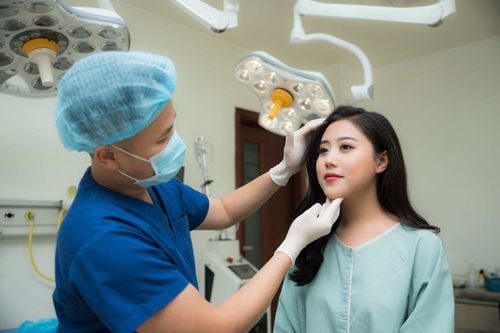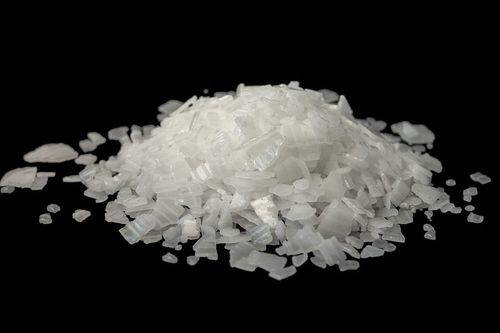This is an automatically translated article.
Chemical exfoliation is a method of removing dead skin cells with acids, with different concentrations. Chemical exfoliation helps skin become smooth, whiter, more evenly colored, open pores and reduce aging. There are many chemical exfoliants such as alpha hydroxy acid, beta hydroxy acid, poly hydroxy acid,...
1. What is chemical exfoliation?
Chemical exfoliation is a method of removing dead skin cells with an acid exfoliant. The chemicals work by breaking the bonds that hold skin cells together, thereby helping to remove dead cells to make room for new cells. Chemical exfoliation will be gentler, with regular use the skin becomes smoother and more even-toned, pores clear, and signs of aging are significantly reduced.Normally, skin cells regenerate every month or so, but sun exposure and aging can slow this process down. So, exfoliation will become useful, this is a way to quickly remove dead skin and make skin whiter, fade acne scars. Unlike physical exfoliation, which uses processes such as manual skin grinding, chemicals will penetrate deep into the skin and remove dirt, the outer layers of the skin. Therefore the chemical method can be more effective than the physical method.
The chemicals used in chemical exfoliation include a wide range of different acids. This method has become increasingly popular in recent years. However, choosing the right product for your skin will help minimize unwanted side effects and bring the best results.
SEE ALSO: How to safely exfoliate according to each skin type
2. Some chemicals are used in exfoliation
There are three main types of chemical exfoliants, all of which are acids but in varying concentrations. Some are lighter and less penetrating than others. The higher the concentration and the lower the pH, the stronger the exfoliating effect will be.
2.1 Alpha hydroxy acids (AHA) Alpha hydroxy acids are a group of water-soluble acids commonly derived from sugary fruits. The acids in AHAs help slough off the skin's surface to make room for new cells, helping to reduce signs of aging by improving deeper wrinkles. Depending on the type of alpha hydroxy acid, they can cause mild hyperpigmentation, enlarged pores, uneven skin tone,...

Acid alpha hydroxy (AHA) có tác dụng tẩy da chết
Glycolic acid: derived from cane sugar Lactic acid: found in milk and vegetables. Citric Acid: Found in Citrus Fruits Tartaric Acid: Derived from Grapes Malic Acid: Found in Apples Where glycolic and lactic acid are commonly used in skin care. Choose concentrations from 5 to 10% for high effectiveness. Alpha hydroxy acids are suitable for dry skin because they only work on the surface and help the skin to hold on to moisture. In addition, AHAs are also recommended for oily or acne-prone skin to improve the skin's natural moisture factor.
2.2 Beta hydroxy acid (BHA) Beta hydroxy acids are oil-soluble products that go deep into hair follicles to dry out excess oil and dead cells. Acids that work deeper not only effectively improve skin texture, but also unclog pores and remove acne-causing sebum. Therefore, BHA products are mainly used to treat acne and skin damage from the sun.
Salicylic acid is the most popular BHA product, known as an acne treatment, but it can also calm general swelling and redness. BHA is suitable for oily or acne-prone skin. In addition, they are also recommended for sensitive skin or those prone to redness.
2.3 Poly hydroxy acids (PHA) Poly hydroxy acids work similarly to alpha hydroxy acids. The difference, however, is that the PHA molecules are larger, so they cannot penetrate as deeply as AHAs. This is why PHA products are gentler, less irritating than other chemical exfoliants. Besides, PHA products such as gluconolactone and lactobionic acid have additional moisturizing and antioxidant effects. PHA is suitable for sensitive skin, especially those with eczema and rosacea.

Các sản phẩm chứa Acid poly hydroxy (PHA) phù hợp cho làn da nhạy cảm
In a nutshell, chemical exfoliation is a method of removing dead skin cells with an acid exfoliant. The chemicals work by breaking the bonds that hold skin cells together, thereby helping to remove dead cells to make room for new cells. This is a gentler method of exfoliation than physical exfoliation and has grown in popularity in recent years. With regular use, the skin becomes smoother and more even-toned, pores clear and signs of aging are significantly reduced. However, to choose the right exfoliating product, you should go to a dermatologist to evaluate your skin condition and be advised to choose the right product, in order to bring the best effect.
Please dial HOTLINE for more information or register for an appointment HERE. Download MyVinmec app to make appointments faster and to manage your bookings easily.
Reference source: healthline.com












